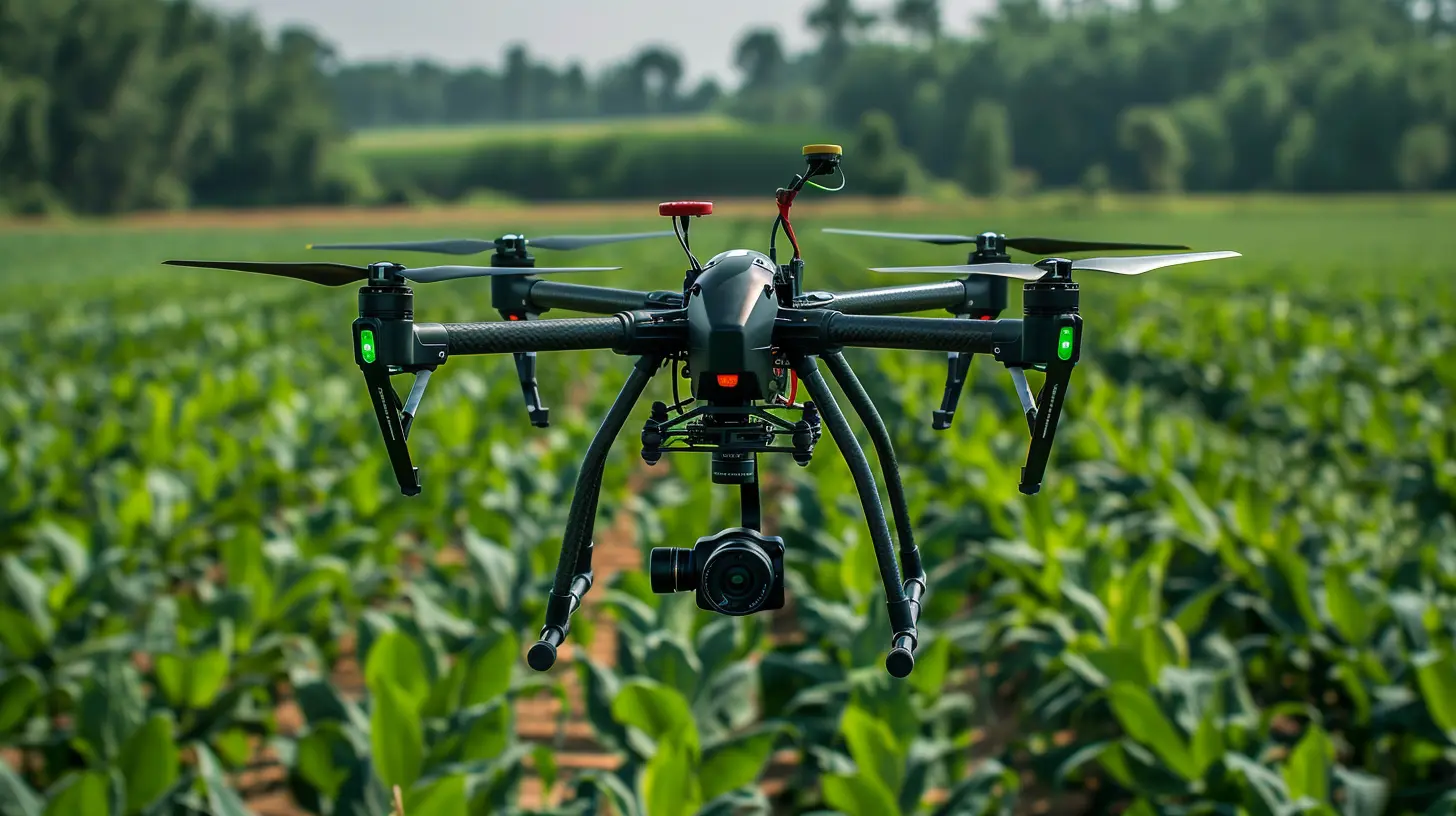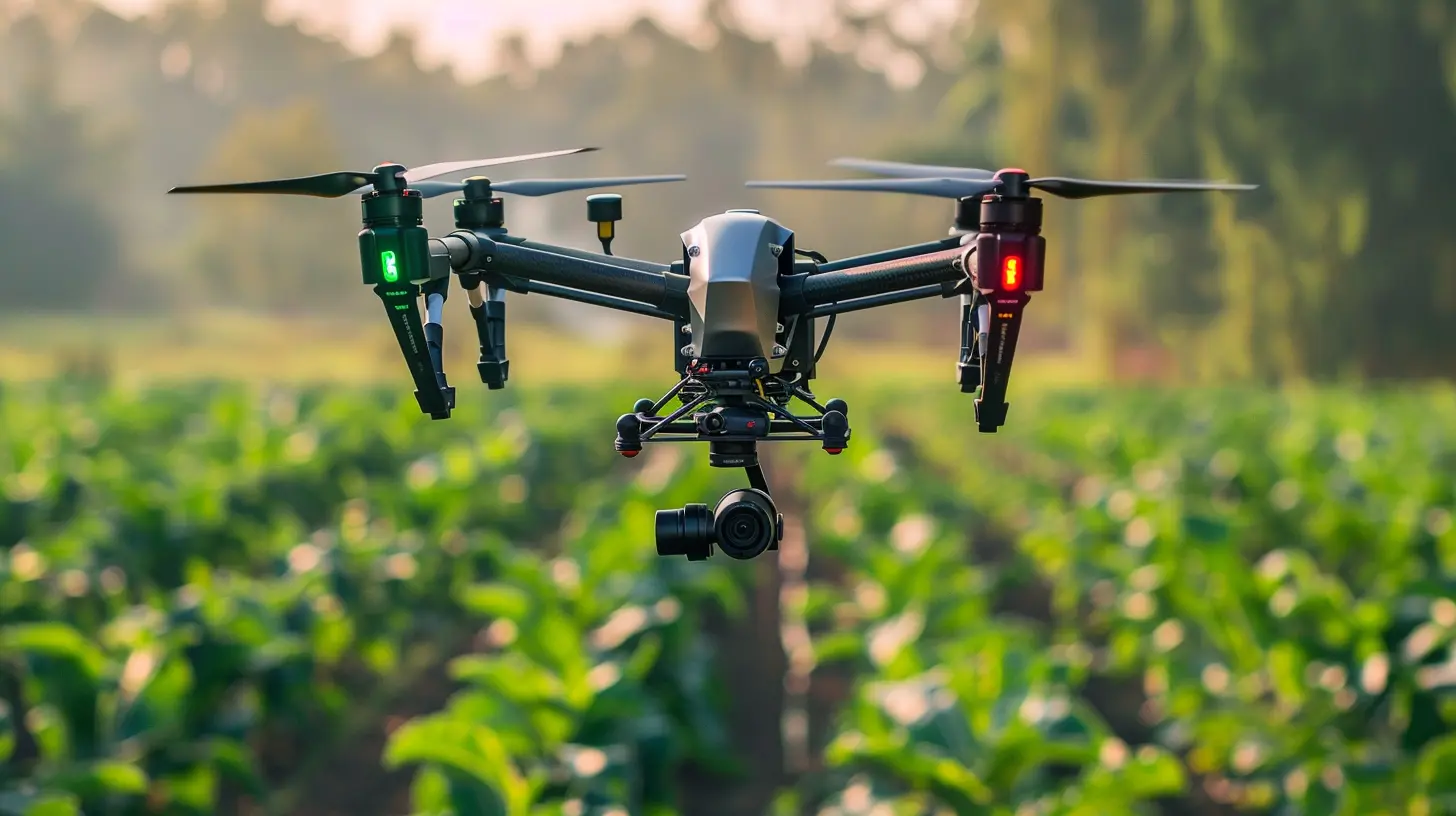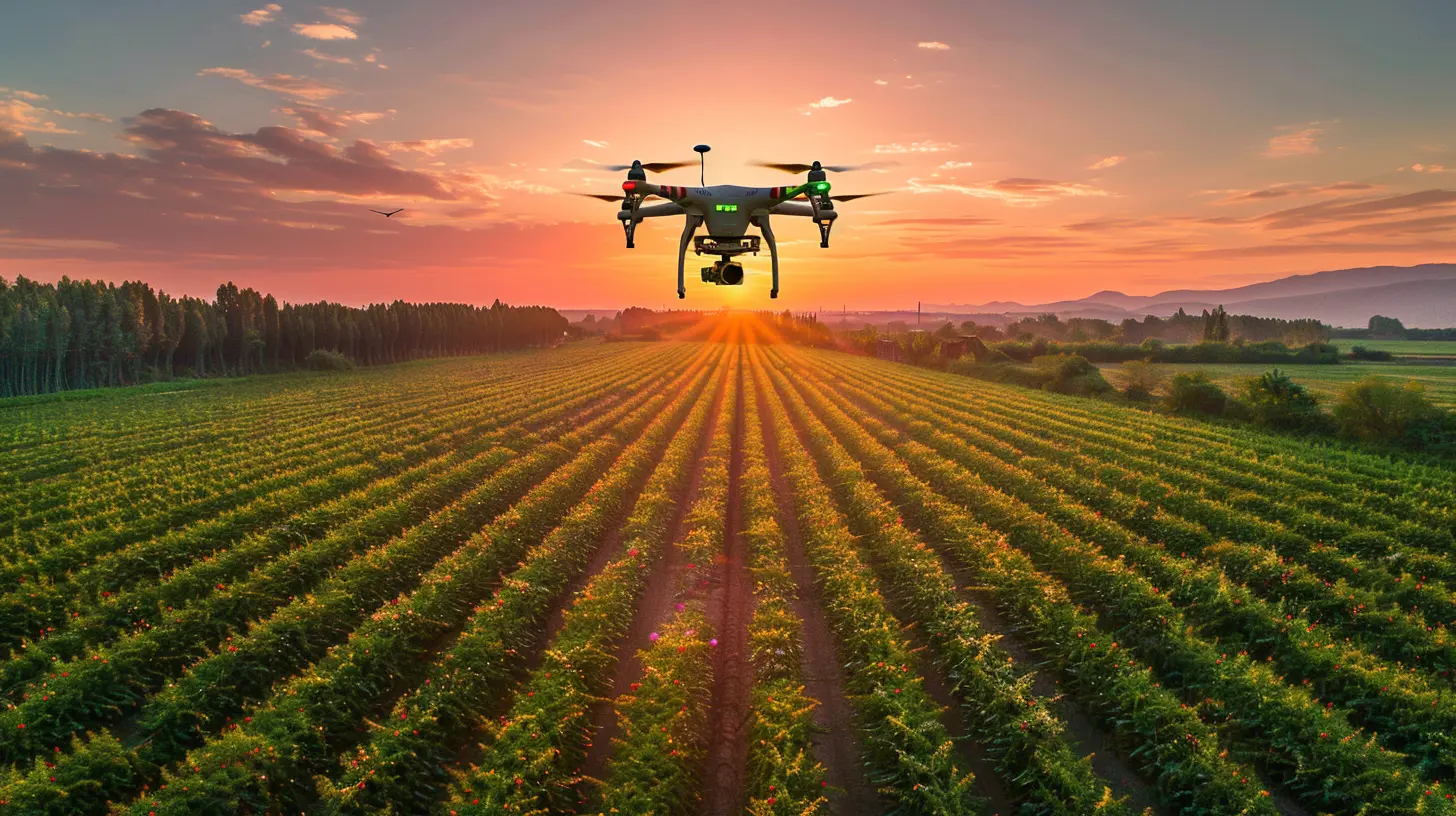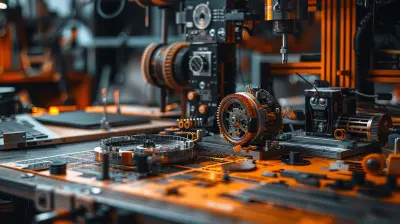How Autonomous Drones Are Changing the Landscape of Agriculture
26 June 2025
Technology is transforming nearly every industry, and agriculture is no exception. Over the years, farmers have embraced advancements like GPS-guided tractors and automated irrigation systems. But now, there's a game-changer making waves—autonomous drones.
These high-tech flying machines are revolutionizing farming operations, making them more efficient, cost-effective, and sustainable. But how exactly are autonomous drones changing agriculture? Let’s dive right in! 
The Rise of Autonomous Drones in Agriculture
Drones used to be just fancy gadgets for photography and aerial surveys. But today, they’re the unsung heroes of modern farming. Farmers are using them for tasks like crop monitoring, planting, spraying pesticides, and even herding livestock.Unlike traditional methods, which can be time-consuming and labor-intensive, drones provide a bird’s eye view of the farm and automate vital processes. This means farmers can do more in less time, reduce waste, and boost their yields—all without breaking their backs. 
How Are Autonomous Drones Revolutionizing Farming?
Let’s break it down into the key ways autonomous drones are reshaping agriculture:1. Precision Farming Like Never Before
Farming isn't just about planting seeds and waiting for them to grow. Successful farmers monitor their crops, soil conditions, and water levels constantly. That’s where drones come in!Equipped with advanced sensors, cameras, and AI-powered analytics, autonomous drones can scan fields in real-time, detect problems, and provide farmers with actionable data. This leads to precision farming, where every decision is based on accurate insights rather than guesswork.
For instance, if a certain area of a field is drying out faster than others, drones can pinpoint the exact spot that needs more water instead of wasting resources on the entire field. That’s efficiency at its finest!
2. Automated Crop Spraying – Saving Time and Reducing Waste
Spraying pesticides and fertilizers manually or with traditional machines isn’t just time-consuming—it’s also expensive and often inefficient. Drones, however, are changing the game.These autonomous flying machines can spray chemicals with impressive accuracy, ensuring crops get the treatment they need without overuse or wastage. Plus, drones can cover large areas quickly, which means farmers save hours of labor while reducing costs.
Another bonus? Environmental benefits. Since drones spray with precision, they help cut down on excess pesticide use, reducing chemical runoff into nearby water sources. That’s a win-win for both farmers and the planet!
3. Real-Time Crop Monitoring and Early Disease Detection
Ever wished you could detect crop diseases before they spread? Well, drones make that possible!Using multispectral imaging and AI analysis, drones can identify unhealthy crops before the damage becomes widespread. They can spot issues like:
- Pest infestations
- Fungal infections
- Nutrient deficiencies
- Water stress
By catching these problems early, farmers can take quick action to prevent crop loss—saving money and ensuring a better harvest.
Think of it as a security system for your farm, constantly scanning for threats and alerting you before they become disasters.
4. Planting Seeds with Aerial Precision
Believe it or not, drones are even helping with planting!Traditional planting methods can be slow and physically demanding. But now, seed-planting drones can drop seeds with pinpoint accuracy, ensuring even spacing and optimal growth conditions.
This technology is especially useful for reforestation efforts and large-scale farms. In fact, some drones can plant tens of thousands of seeds per day, making them a huge time-saver for farmers looking to expand their crops quickly.
5. Livestock Management from the Sky
Cattle ranchers, rejoice—drones are also proving valuable for livestock management.Instead of trekking across vast lands to check on their animals, ranchers can deploy drones to monitor herds effortlessly. Thermal imaging cameras can even detect if an animal is sick or missing, making it easier to ensure the health and safety of livestock.
And yes, some smart drones can even herd cattle! Imagine a flying “sheepdog” guiding your livestock without you having to step outside—it’s like something out of a sci-fi movie, but it’s happening today. 
The Benefits of Drones in Agriculture
By now, it’s clear that autonomous drones aren’t just fancy gadgets—they’re transforming farming in multiple ways. But let’s highlight the key benefits:✔ Increased Efficiency
Drones can cover large areas quickly, collect data in real time, and automate repetitive tasks—saving farmers countless hours of manual labor.✔ Reduced Costs
By optimizing water, fertilizers, and pesticides, farmers can cut down on waste and save money. Plus, fewer labor costs mean higher profits.✔ Higher Yields
Precision monitoring and targeted interventions help farmers maximize their crop production, leading to better harvests and higher revenues.✔ Sustainable Farming
Less chemical runoff, reduced fuel usage, and lower water wastage make drones a more environmentally friendly solution compared to traditional farming methods.✔ Better Decision-Making
Access to real-time data allows farmers to make informed choices, reducing risks and improving overall farm management.
Challenges Holding Back Drone Adoption in Agriculture
Despite their obvious benefits, not every farmer is using autonomous drones yet. Why?1. High Initial Costs
Drones equipped with advanced AI, sensors, and cameras aren’t cheap. Small-scale farmers might struggle with the upfront investment. However, with increased adoption and competition, prices are expected to drop over time.2. Regulations and Legal Restrictions
Many countries have strict rules regarding drone usage, especially for commercial purposes. Farmers need to navigate complex regulations before deploying drones on their land.3. Technical Knowledge Required
Not everyone is tech-savvy. Some farmers may find it challenging to operate drones and analyze the data they collect. Thankfully, user-friendly software and training programs are making it easier.4. Battery Limitations
Drones still rely on battery power, which means limited flight time before needing a recharge. However, advancements in battery technology are continuously improving drone efficiency.The Future of Autonomous Drones in Farming
So, what’s next? The future of autonomous drones in agriculture looks incredibly promising.With AI-powered drones evolving at a rapid pace, we can expect even more automation, accuracy, and efficiency in farming. Some potential future developments include:
- Self-recharging drones with longer flight time
- Drones integrated with IoT (Internet of Things) for smart farming
- Automated drone fleets working in sync to manage entire farms
- Advanced AI predicting crop health and weather patterns with precision
It’s safe to say that drones are here to stay, and they’ll continue to play a crucial role in shaping the future of agriculture.
Final Thoughts
Autonomous drones are no longer just a futuristic concept—they’re actively transforming farming as we know it. From precision monitoring to automated spraying and livestock management, these flying machines are making agriculture smarter, more efficient, and more sustainable.While challenges like costs and regulations still exist, the long-term benefits far outweigh the drawbacks. As technology advances and accessibility improves, more and more farmers will embrace drones to optimize their operations.
So, if you’re a farmer or simply someone fascinated by agricultural tech, keep an eye on drones—they’re redefining the way we grow food and manage farmland!
all images in this post were generated using AI tools
Category:
Emerging TechnologiesAuthor:

Vincent Hubbard
Discussion
rate this article
1 comments
Kael McCallum
Autonomous drones revolutionize agriculture by enhancing precision farming through real-time data analysis, crop monitoring, and efficient resource management. They optimize yields, reduce waste, and support sustainable practices, ultimately transforming traditional farming methods and addressing global food production challenges.
July 16, 2025 at 2:53 AM

Vincent Hubbard
Thank you for your insightful comment! Indeed, autonomous drones are pivotal in modern agriculture, driving efficiency and sustainability while addressing critical food production challenges.


